BEST SELLER
In Stock
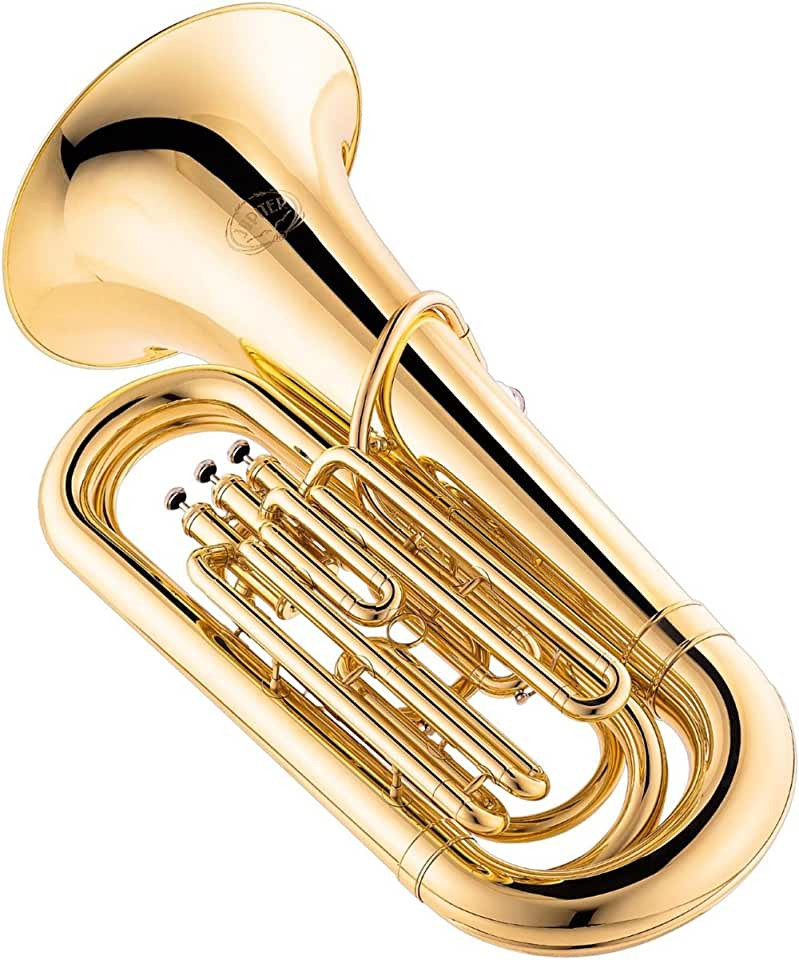
Jupiter 378 Series
- Easy to play and hold
- Lacquered brass tubas
- Silver pistons made of nickel
OUR CHOOSE
In Stock
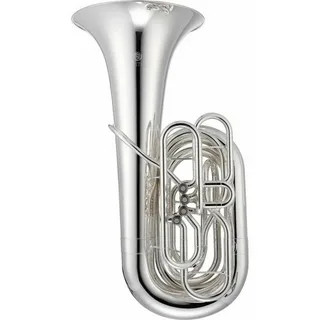
Jupiter JTU1110
- Key: BBb tuba
- Size: 4/4
- Bore: .732-inch
- Bell: 17.4-inch
GREAT MODEL
In Stock
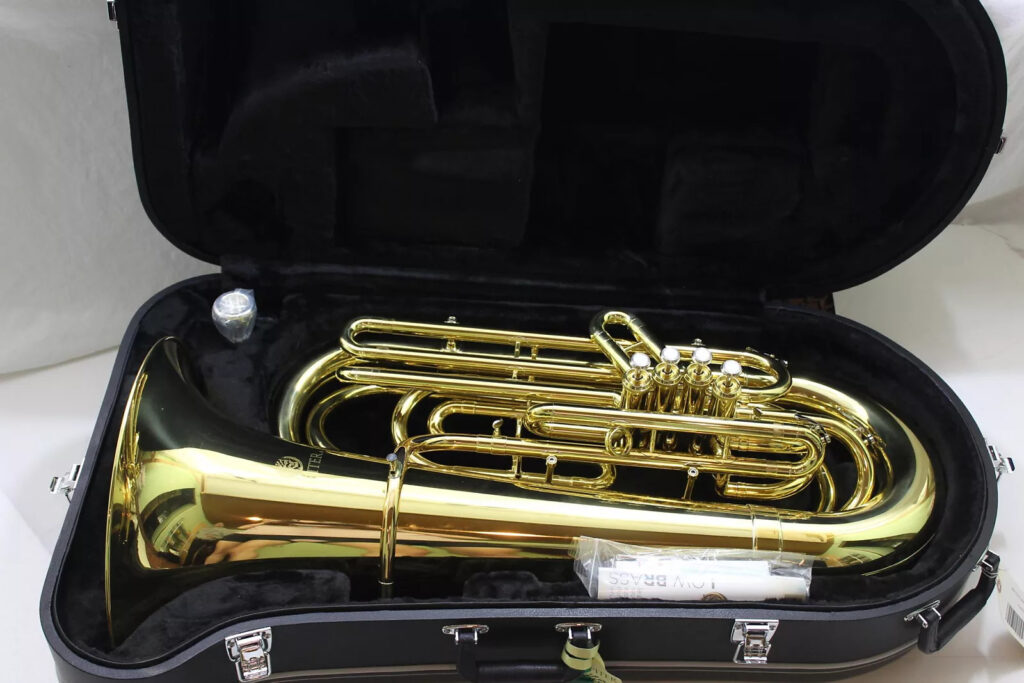
Jupiter 1000 Series
- Key of BBb
- Lacquered Brass Body, 15″ Bell
- Stainless Steel Pistons, .709″ Bore
- Removable Valve Section, Contoured Front Action 4 Valve Cluster
Jupiter 378 Series
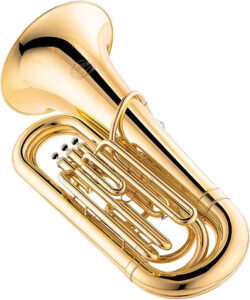
To not be left out, Jupiter returns with this innovative model, which is designed to live up in the position of satisfying the band director as well as all its members. It is also one of the best tubas among all its competitors.
Jupiter 378 series is perfect in its distinct features like an easily detachable lead pipe that allows it to be used by the marching band or standing performances.
Jupiter 378 series tuba features 3-valve action nickel silver pistons that are light and quick in response and positioning. The tuba is also equipped with a valve body and bells that allow for the ease of servicing and repairs. The entire exterior construction is sturdy, which is ideal for tuba lessons in the theatre or classroom.
The Piston rotary valves on the Jupiter 378 provides the beginner with comfort and ease while playing. The size and weight also let the player control the volume and play.
The tuba has a full-sounding instrument measuring 3/4 inches in size. It is a feature every band director would delight to be able to.
Features:
- Easy to play and hold
- Lacquered brass tubas
- Silver pistons made of nickel
Jupiter JTU1110

If you’re a musician and are looking for an ideal solution for any kind of music software, Jupiter JTU1110 is one of the best tubas and a great option!
This concert tuba from Jupiter is also a great choice for anyone who wants to own their musical instrument. Jupiter JTU1110 offers you the option of selecting models with pistons or rotary valves to meet your needs.
Offering a wide range of sizes and valve configurations, Jupiter tubas are known for their top performance as well as peace of mind for players of all levels.
The brass instrument body, which is lacquered in the JTU1110, was constructed using top-quality technology to make an instrument with the highest level of playability and the most precise scale.
It comes with 4 piston valves made of stainless steel which gives the JTU1110 a stunningly swift and smooth performance alongside enhanced playing ability and agility.
The unique aspect that this model has is the fact that it comes with an open wrap valve tubing which has never been previously seen on the market. In addition, it features a wooden frame case with wheels, displaying an elegant design while providing an excellent safeguard for tubas.
Features:
- Key: BBb tuba
- Size: 4/4
- Bore: .732-inch
- Bell: 17.4-inch
- Bell Material: Yellow Brass
- Bell Position: Upright
- Number of Valves: 4
- Valve Position: Front Action
- Valve Type: Piston
- Valve Material: Stainless Steel
- Features: Contoured Valve Cluster; Nickel Silver Outer Slides
- Case: ABS Formed case, with wheels.
- Mouthpiece: Yes
- Finish: Lacquer, Silver
Jupiter 1000 Series
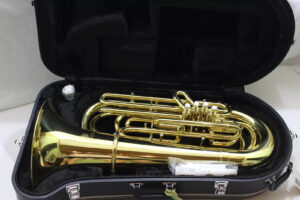
Jupiter keeps the game going by introducing this amazing new edition of the best tubas Jupiter Series 4-Valves BBb Tubas Lacquer. This tuba was created to be comfortable for hard-core players and soloists of all heights who would like to take their music acts to a new level.
The Jupiter JTU1010 is a 4-valve front-action, contoured pipe made of stainless steel with a 709-inch bore. It was specifically designed to improve the comfort of users and provide effortless performance. If you are seeking a more compact instrument, the Jupiter JTU1010 is the ideal choice.
This Jupiter tuba has an enclosed wheeled case that provides adequate storage, as well as a mouthpiece. It comes in a silver and lacquer design. Jupiter JTU1010 also comes in different sizes and configurations. It gives top performance and great comfort for players of all levels.
The compact and standard-size JTU tubas have valve sections that can be removed and are all encased in full ABS solid and molded cases that allow for easy transportation.
Features:
- Key of BBb
- Lacquered Brass Body, 15″ Bell
- Stainless Steel Pistons, .709″ Bore
- Removable Valve Section, Contoured Front Action 4 Valve Cluster
- Case Included
RS Berkeley
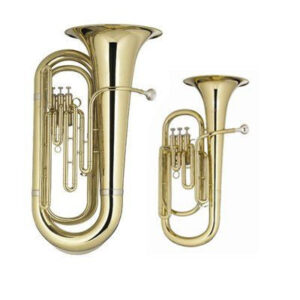
Are you a musician, a student, or a band director with a middle budget and looking for a tuba of top quality? You’re in luck because you’ll find that the RS Berkeley Tuba has everything to make your playing career, and your dream of becoming a professional becomes a possibility.
This RS Berkeley Tuba is just one of the distinct ranges of RS Tubas that are making waves in the market for tuba musical instruments. It comes with an all-inclusive, full-fledged lacquer body with a great finish that highlights its quality and price.
The overall dimension of the tuba is 3/4 and, as a BBb tuba, it comes with three top-action Monel valves, as well as hand-lapped pistons that mean that the players will produce mellow sounds that are free of any unnecessary sound.
Hand-lapped pistons are engineered to ensure high-quality intonation and the production of clear sound.
In addition, the RS Berkeley tuba features a bore that measures 656 inches in diameter and an upright-style bell that measures three inches long.
Like the similar sister models, the RS Berkeley also comes with an original mouthpiece that includes an individualized molded case that features wheels. It is a great choice for all kinds of players – from beginners to professionals.
Features:
- Includes a case and a mouthpiece.
- Includes care supplies
- Beautiful finish
- Reliable, consistent valves
Cool Wind CTU-200
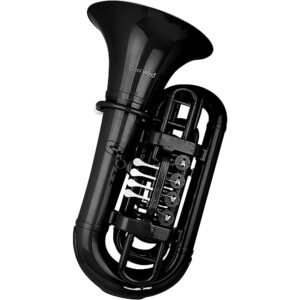
The majority of tubas on the market for instruments today bear a striking resemblance to each other. However, the Cool Wind CTU 200-Series 4 Valve BBb Tuba manufacturers have chosen to defy conventional fashion by creating the distinctive feature and style for its name. This is a rare tuba with a red color scheme, so it stands apart from the rest.
It is the Cool Wind CTU 200 that has been an active brand over the last few years. With the market raging, Cool Wind has taken an extra step away from the crowd by launching this exclusive design with the construction of a brass-plastic composite, creating a revolution in the world of tuba manufacturing.
For tuning, the Cool Wind CTU 200 features 21mm of the bore as well as an action valve piece with 4 valves to help with the overall play-turnover. It also has the rotary valve, ABS, and a metal valve, all of which are placed in a unique red color that’s never been previously seen.
The gig bag, which is soft and was included with the tuba to allow make it easy to transport, emphasizes its determination to be competitive and change the marketplace.
Features:
- Tuning Bb Bore 0.826″ (21 millimeters);
- Mouthpieces;
- ABS Valves;
- 4-valved Bell;
- Metal Valve Rotor valves;
- Case Soft Gigbag
Instruments made of plastic “brass” instruments have been on the market for some time now. Today, manufacturers are applying what they’ve learned to apply to more innovative designs like the plastic tuba. Cool Winds is at the leading edge of this manufacturing and design revolution.
Yamaha YBB-105WC
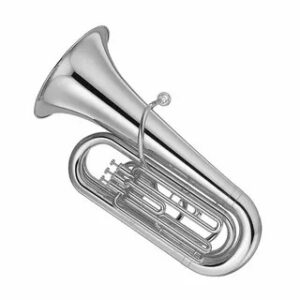
The small dimensions of the 105 make it a great instrument for those who are just beginning and its numerous high-quality features ensure that it is an instrument you will be able to keep as you progress.
Slides and hand-lapped pistons with a lathe as well as a precise brace design, positioning, and an extended mouthpiece taper, and a bell specially designed flare make the 105 a powerful instrument. It is quick to respond, flawless in its intonation, and extremely robust. All this is available at a remarkably affordable price.
BBB tuba. Size 3/4, .661″ bore, 14-3/8″ upright brass bell in yellow with a unique flair to increase projection, three Top-action, nickel-plated alloy pistons mouthpiece made of gold brass with a special length taper and hand-lapped slide the clear lacquer is finished with epoxy.
The majority of Yamaha wind instruments are covered by an extended 5-year warranty.
Features:
- Key: BBb
- Bore size: .661 inches
- Bell size: 14-3/8 inches
- Bell Material: Yellow Brass
Guide to buying the best Tubas
The tuba is a sound base upon which other instruments in the orchestra or band will be constructed. The tuba tone can dramatically alter the mood of an entire composition, causing it to trudge in a tense manner or fill it with pulsing energy.
Due to this, the tuba player requires an instrument of top characteristics with incredibly rich and versatile sound quality.
If you’re looking for tubas, you could be thinking about how to choose the perfect instrument. The first and foremost thing to consider is that the ideal tuba should be one you can physically hold. Contrary to other instruments, it is completely possible to buy one that is large for your needs, making it unwieldy to carry and play.
There are many other factors you need to think about before buying the tuba. Check out our buying guides to ensure you are aware of all the factors to help you get what you truly desire.
If you’re intending to purchase an item, we suggest you look into the points we have highlighted on this page.
SIZE FIRST
There are many aspects to take into consideration before buying a tuba. The most important one is the size. It is possible to buy tubas that are too big and heavy for the player. This is especially true when the player is young.
As with other instruments, tubas come in various sizes. A 3/4-sized instrument is typical; however, there are 5/4, 4/4, and 6/4 tubas. In contrast to string instruments, tuba sizes differ between manufacturers and there are no standard dimensions.
The most effective method of thinking about it is to say that A 3/4 tuba is a smaller tuba. A tuba that is 4/4 is a typical size for the manufacturer. In keeping with this idea, 5/4 is a large size and 6/4 is larger.
Another aspect to consider regarding size is the location of the lead pipe, which is the place where the mouthpiece is placed in. Even if the instrument has adequate weight and size for the player, however, the lead pipe could be too high or low, which makes playing harder than it has to be.
Other Considerations for the best tubas

If you locate an appropriate tuba of acceptable size, there are additional things to think about:
Type
In most cases, it is best to concentrate on a BBb tuba, or perhaps the C tuba. They will be the most popular tubas. In general, the BBB tuba is characterized by a deeper and broader sound that is perfect for the band.
A CC tuba usually works better in orchestras where the lower strings aid the tuba in bringing it to the lower end.
If you choose to play the BBb tuba, you are likely to have to learn to transpose the music. However, it’s not a daunting task once the basic concepts are grasped.
Valves
A majority of students who are beginning their music practice will need the three-valve tuba. But a serious performer hoping to be in the band at high school will probably require the four-valve tuba. A tuba with five valves should be reserved for professionals most likely because it will only be available in premium models.
There are two kinds of valves that tubas may contain piston, which functions similarly to a trumpet (by moving between up and down), and a rotary.
Rotary valves are usually found on mid- or expensive tubas. They require fewer movements to operate and thus help to play more smoothly.
Materials
Tuba players have options when it comes to the material they choose to use. The most popular models for students are yellow brass or the more dark-sounding gold brass. Rose brass instruments can be a good choice for those who prefer an edgier tone.
Another material which is now becoming common in lower-end tubas is plastic. There are some flaws to it, however, many players can overlook them due to their much lower cost and lightweight, and low chance of getting scratch marks.
Professional and intermediate musicians may want to think about a nickel silver tuba. This is a fantastic material, but it’s expensive.
Finish
There aren’t many choices when it comes to the final product. Plastic tubas can be purchased in a variety of colors that don’t affect the tone.
A model for students will probably be lacquered and even though you might see some odd colors, the majority of them will be a gold-colored shade or silver. In addition to protecting the instrument, the lacquer will bring out the most basic tones.
Silver plating is only present on top-quality instruments. It’s a warm, rich sound, but it needs more care to keep the shine of the instrument.
TUBA PRICES
Cost-effective: If you’re looking to buy a tuba that is less than $2,000, then you’ll need an aluminum model. It’s not a bad choice for cost and durability, but if you’re looking for something that will last longer, you’ll need to go to the upper portion of this bracket to find models with metal valves.
Mid-range: From $3,000 up to $6000, it is possible to get tubas of either size of 3/4 or 7/8. The majority of these models come with three piston valves. However, when you get closer to the top-end models within this price range, you can discover tubas with four-piston valves, and even ones that have three rotary valves.
Costly: If you’re looking for everything bells and whistles in one tub, then step-up professional models can cost from $6,000 up to $15,000. In most cases even if you’re after an ultra-luxury tuba, you’ll be able to get everything you require in the range of $10,000 to $12,000.
TIPS

To ensure that your very own tuba performs in the way you want it to be at your most authentic, you must take good care of the tuba. Here are some tips to assist you in doing just what you need to do.
Guard against dents
A tuba is huge and heavy. That means that if it is dropped, even if it’s only once, it could be damaged.
Place it inside its case
Since tubas are so difficult to handle, the most convenient (and only) location to keep them while not performing is inside the case.
Keep it dry
The most important thing to consider for tuba maintenance (outside of dropping it) is removing moisture. After each session, use your water key to open and then gently blow out as much moisture as you can. Following that, take a swab over all the parts to eliminate any remaining water.
Wipe it off
It’s not difficult to do and there’s no reason to not be cleaning the outside of your tub with an emery cloth.
Cleanse your mouthpiece
The tuba mouthpiece will produce all sorts of bacteria if you do not keep it clean. Clean it with hot (not warm) soapy water, and then rinse every week at least to keep the odors of foul smells away.
Clean and make sure to lubricate
The slides and valves need to be taken off, cleaned, and lubricated to work effectively. If you’re not comfortable performing this task yourself, ask your teacher for assistance.
Clean it thoroughly every year
Every couple of months, your tub will need a relaxing bath. First, you must remove the instrument from the room and then wash the parts that could be wet with hot (never cold) detergent.
Be sure to take any precautions that are necessary like lining the bathtub with a towel to ensure that you don’t damage the equipment, as well as your bathtub. Also, the first instance you do a thorough cleaning, it is possible to seek assistance from someone who is experienced in this kind of procedure.
FAQ on The Best Tuba Brands
Sometimes I see BBb and CC tuba. Other times, it’s written Bb or C tuba. What is the distinction?
The language of music can be somewhat snarky since it makes use of a variety of terms that don’t always immediately make sense. However, it’s necessary to have a purpose. By adding the second capital letter, it denotes tubas as instruments that are played in the lower register, which is one less than that of a euphonium or baritone horn. Since no one calls one of those instruments “Bb tuba” or a “C tuba,” when you hear these terms, you could be fairly certain that they are talking about a BBB or CC tuba, but they have eliminated a B or C to make it easier for shortness.
Which transposition is it?
In the world of music, different instruments are recorded in the same way as they sound. For example, instance, if a player of the flute notices a C, then plays it’ll sound like the instrument of a C.
If the Bb tuba player is looking at C and then plays it’ll make a Bb sound which is one step lower. If the player wishes to be able to perform the same note as the flutist, they must play a C. This is known as transposing.
Why is transposing crucial in tuba players’ lives?
A. In rare cases the tuba music will be written in C which means it sounds as if it was written. If you are playing the BBb tuba, you’ll be expected to be aware of this and transpose the tune yourself, so that it sounds correct when you play it.
What tuba do professionals play?
CF Tubas are the most preferred tubas in America and are often called the ‘all rounder’, but that doesn’t mean that tubas still have an influential place in the American music scene.
